
Feroze Gandhi was an Indian freedom fighter, politician and journalist.

Marine Drive is a 3 kilometre-long Promenade along the Netaji Subhash Chandra Bose Road in Mumbai, India. The road and promenade were constructed by Pallonji Mistry. It is a banana-shaped, six-lane concrete road along the coast of a natural bay. At the northern end of Marine Drive is Girgaon Chowpatty and the adjacent road along links Nariman Point at southern tip to Babulnath and Malabar Hill at northern tip. Marine Drive is situated on reclaimed land facing west-south-west. Marine Drive is also known as the Queen's Necklace because, when viewed at night from an elevated point anywhere along the drive, the street lights resemble a string of pearls in a necklace.
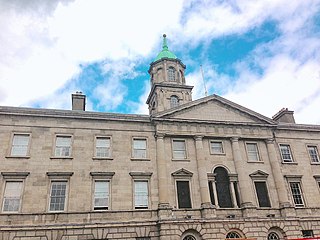
The Rotunda Hospital is a maternity hospital on Parnell Street in Dublin, Ireland, now managed by RCSI Hospitals. The Rotunda entertainment buildings in Parnell Square are no longer part of the hospital complex.

Bhikaiji Rustom Cama or simply as, Madam Cama, was one of the prominent figures in the Indian independence movement.
Navsari is the ninth biggest city in the state of Gujarat in India. It is the administrative headquarters of Navsari District. Navsari is situated between Surat & Mumbai. Navsari is a twin city of Surat. It is located 37 km south of Surat. As per 2011 Census of India, Navsari is 16th biggest city of Gujarat state. It ranked 10th most populous city of Gujarat in 1991 Census of India and 2001 Census of India. Navsari is the 25th cleanest city of India according to the Swachh Bharat Urban mission. Dandi village near Navsari was the focal point of the great Salt March led by Mahatma Gandhi during civil disobedience movement of India.
Khurshed Framji Nariman, also known as Veer Nariman, was one of the second generation of Parsi stalwarts in the Indian National Congress. He remained Mayor of Bombay from 1935 for a year.

The Cama & Albless Hospital is a hospital for women and children in the city of Mumbai, India, with 367 beds.
Jerusha Jacob Jhirad FRCOG, MBE was an Indian physician.

Kharshedji Rustomji Cama (1831–1909), often known as K. R. Cama, was an Indian Parsi scholar and reformer from Bombay.

Joseph Bolivar DeLee was an American physician who became known as the father of modern obstetrics. DeLee founded the Chicago Lying-in Hospital, where he introduced the first portable infant incubator. Early in his career, he was associated with the medical school at Northwestern University. After 1929, he was employed by the medical school at the University of Chicago.
Naoroji Furdunji (1817–1885) was a Parsi reformer from Bombay.
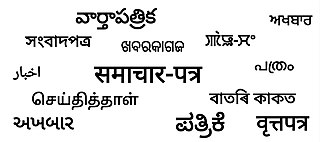
The Media in Gujarati language started with publication of Bombay Samachar in 1822. Initially the newspapers published business news and they were owned by Parsi people based in Bombay. Later Gujarati newspapers started published from other parts of Gujarat. Several periodicals devoted to social reforms were published in the second half of the 19th century. After arrival of Mahatma Gandhi, the Indian independence movement peaked and it resulted in proliferation of Gujarati media. Following independence, the media was chiefly focused on political news. After bifurcation of Bombay state, the area of service changed. Later there was an increase in readership due to growth of literacy and the media houses expanded its readership by publishing more editions. Later these media houses ventured into digital media also. The radio and television media expanded after 1990.
Margaret Ida Balfour, FRCOG was a Scottish medical doctor and campaigner for women’s medical health issues, who made a significant contribution to the development of medicine in India. Her prolific writing during the early 20th century alerted many to the health needs of women and children in India and Africa and the unhealthy environments in which they lived.
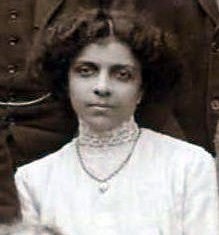
Dossibai Rustomji Cowasji Patell MBE, MRCP, later known as Dossibai Jehangir Ratenshaw Dadabhoy, was an Indian obstetrician and gynaecologist, who in 1910 became the first woman to become a member of the Royal College of Surgeons of England (RCS).

Sir Temulji Bhicaji Nariman RCSEd, also recorded as Tehmulji B. Nariman, was a obstetrician from Bombay who co-founded one of the city's first lying-in hospitals in 1887 and was knighted in 1914 for his work during the plague epidemic in India at the turn of the 19th century.
The Parsi–Muslim riots occurred in 1851 in Bombay, and were reprised in 1874 in parts of Gujarat. These marked the beginning of a period of tension in the two communities. The first riot took place over the blurred depiction of the Islamic prophet, Muhammad, and his appearance in a public print by a Parsi newspaper, Chitra Gyan Darpan, in October 1851. A second riot place on May 1857,over a Parsi named Bejonji Sheriaiji Bharucha was accused of disrespecting a mosque by some Muslims. A third riot took place on 13 February 1874, over an article on the life of Muhammad in a book entitled Famous Prophets and Communities.
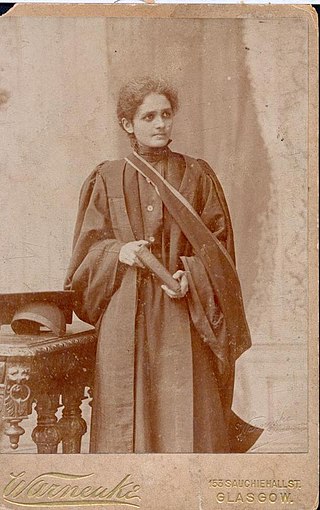
Merbai Ardesir Vakil was an Indian-Parsi physician and the first Asian woman to graduate from a Scottish university.
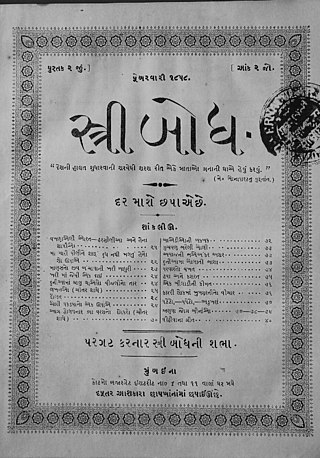
Stribodh was a monthly journal/magazine in Gujarati language. Founded in 1857 by a group of social reformers, the journal was one of the earliest magazines aimed at a women's audience in India.













